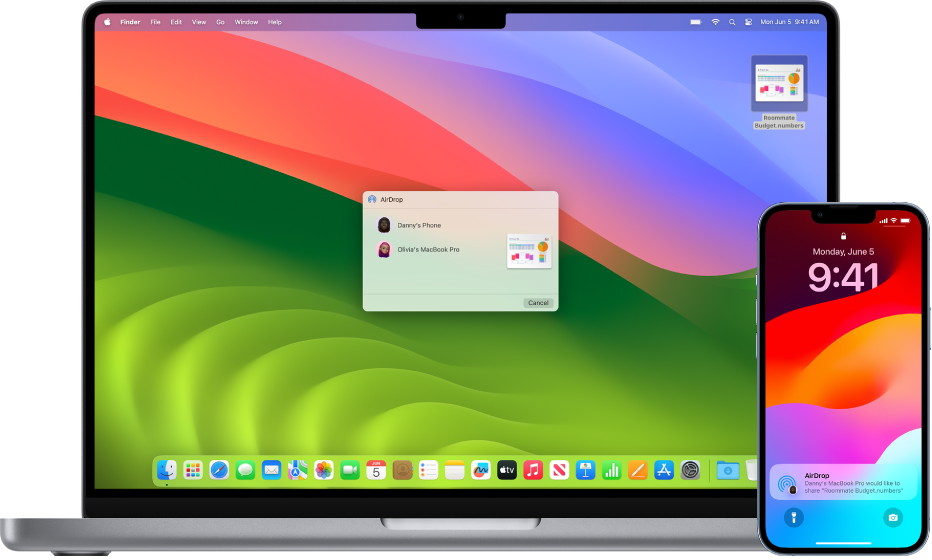If you want to remove your iPhone from your Mac, you must know how to eject it properly. To do this, you can use a USB to Lightning cable, AirDrop, or iTunes. To eject the iPhone, first select its name and click on the eject button. Then, unplug the iPhone from the USB cable and remove it from the Mac.
Disconnecting an iPhone from a Mac
Apple’s ecosystem allows devices to seamlessly work together. Your Mac and iPhone work in tandem and are designed to be used in conjunction with each other. However, if you need to disconnect one device from the other, you can do so manually. There are several methods you can use. You will need to choose the one that best fits your needs.
There are times when you need to disconnect your iPhone from your Mac for a few reasons. First, the iPhone could be experiencing some hardware problems that may require a new USB cable. Secondly, you might want to try AirDrop. This is a faster method than using a USB-to-Lightning cable.
Lastly, you can try resetting the NVRAM of your Mac. The NVRAM stores settings like the muted state of the computer, and corrupted NVRAM can cause multiple problems. Fortunately, there are several methods that will help you fix this problem. To do this, hold down the power button and the volume down buttons for at least 15 seconds until the Apple logo appears.
The first method is to force your Mac to restart. Holding down the Power and Home buttons will force your Mac to restart. Once it is restarted, you can connect your iPhone to your Mac again via Wi-Fi or USB-C. Another way is to force the Mac to shut down all applications and processes that are currently connected to your iPhone.
To unplug the iPhone from your Mac, first open the Finder menu. From here, select the device in the list and navigate to the device options. From here, you can select the settings that need to be turned off. Afterward, navigate to the General and Reset options. Alternatively, you can also choose to revoke permissions for your iPhone by opening the iPhone Settings.
If the problem persists, restarting the usbd process may fix your iPhone. The usbd process is crucial for the interaction between your iPhone and your Mac. It helps your Mac configure USB-connected iOS devices. Disabling the usbd process will not prevent your iPhone from connecting, but your Mac will likely charge it slower than usual.
Using a USB-to-Lightning cable
When using a USB-to-Lightnng cable to eject iPhone from Mac, you can choose the name of the iPhone you want to remove from the Mac and click on the eject button. Once the eject button is clicked, the iPhone will be removed from the Apple ID device list and will no longer be visible on your Mac.
You can also use a USB-to-Lightnng cable to connect your iPhone to your Mac. If you do not own one, you can purchase a USB-to-Lightnin cable from AmazonBasics. To avoid compatibility problems, you should use a Lightning cable that is MFi certified. However, if you can’t find a cable with this certification, you can try buying an official Apple cable from Apple.
If you are unable to use your iPhone after connecting to your Mac, you may need to unplug the USB-to-Lightning cable and reconnect it to the iPhone. Once you have done that, you can use your Mac’s wireless capabilities and work with its contents safely. Just be sure to sign in to iCloud with the same Apple ID as your Mac.
While the Lightning connector is commonly used to connect iPhones and iPads, you can use it to charge your iPhone or iPad using your computer’s USB port. However, the quality of the charge will depend on your computer. Some older computers can’t deliver the necessary power to fully charge an iPhone.
Connecting your iPhone to your Mac is easy. Once connected, the iPhone and Mac will be automatically connected. You can then use iCloud to backup files and pictures from your iPhone to your Mac. Another great feature of this connection is the AirDrop functionality, which lets you move files and pictures between Mac and iPhone without physical connection.
The Lightning port was introduced by Apple in September 2012 and has given it monopoly over the accessory market. However, the Lightning connector is not as compatible as some modern cables. Moreover, it might make some iPhones harder to repair and reflash.
Using AirDrop
AirDrop is a feature that allows your iPhone and Mac to detect each other and share files. However, if you don’t want to share files with other devices, you can disable AirDrop in your Mac’s preferences. You can do this from the Finder by selecting AirDrop in the Favorites menu, or by selecting No One from the Control Center. Using AirDrop requires Bluetooth and Wi-Fi to be enabled, so make sure both are turned on before you use this feature.
To enable AirDrop, go to your iPhone’s Control Center and swipe up from the bottom to open the Control Center. Tap the AirDrop icon and select Contacts or Everyone. You can then drag the photo to your Mac. You can also add a profile picture to your Contact Card.
The first step in using AirDrop is to make sure that your iPhone and Mac have the latest versions of iOS and Mac OS. Both Macs and iOS devices should be up to date, as the latest versions are optimized for AirDrop. Once you’ve enabled AirDrop on your Mac, drag files from your Mac to your iPhone. You’ll see a circle appear in the Finder. Drag the files onto the circle and accept the sharing message. You’ll also be able to see the live file transfer on your iPhone.
If you don’t want to use Bluetooth, you can also use AirDrop. You can transfer files from Mac to iPhone without using any cables. It’s faster than using USB-to-Lightning cables. You may have to clean the cable or the port first to avoid disconnecting the iPhone from the Mac.
The process is easy to follow. To start using AirDrop, open the Finder window on your Mac and tap the AirDrop icon in the iOS Sharing menu. From here, you can choose the destination folder to store the files in. If you want to share photos or videos with your Mac, you can also choose a folder to save them in.
AirDrop also supports a legacy mode for older Macs. You can choose this mode to transfer files to an iPhone if your Mac is running an older version of OS X. To switch to legacy mode, open the AirDrop window and select the option to enable Bluetooth or Wi-Fi.
Using iTunes
Ejecting an iPhone from your Mac is easy and will prevent your device from being accidentally deleted. If you’ve backed up your iPhone in iTunes, you can simply click the “eject” button next to the device in the Finder. You can also choose Controls > Eject Device.
The first step is to unplug your iPhone from your Mac. Be sure to unplug it from the computer completely, or else your iPhone may become corrupted. This will render the device inoperable. Next, click the eject button on your Mac’s desktop or Finder sidebar. This will eject the device from your Mac and end all processes between your Mac and iPhone.
Once your iPhone has been ejected from the Mac, you must go to your iTunes account to delete it. The iPhone backup will appear in the Latest Backups section of the summary screen. You can then unplug your iPhone. However, make sure that your iPhone is signed into iCloud with the same Apple ID.
To connect your iPhone to your Mac, launch iTunes on your computer. The iTunes icon will look like a musical note in a circle. You can find it in the dock, or in the Applications folder. Click on the iPhone icon near the volume slider and play button. Clicking on the iPhone icon will open the iPhone Summary screen.
You can also disconnect your iPhone from Apple’s iMessage service by selecting Settings > Messages. From here, you can choose whether or not to send the messages. If your iPhone has Wi-Fi, you can turn off this feature by disabling the corresponding option in Settings. Then, you can sign back in with a different Apple ID.
You can eject your iPhone or iPad from your Mac by using the controls menu or using the Ctrl+E keyboard shortcut. However, you must first disconnect the iPhone or iPad from your computer’s USB cable before you can physically unplug it. You can also use iTunes to eject iPhone or iPad from your Mac.
When you’ve finished using your iPhone and want to remove the iPhone from your Mac, you can use the Apple ID feature to remove it from iTunes. iTunes is the media manager for Apple products, and allows you to add music, videos, and other media. Users can associate up to 10 devices with their iTunes account. However, if you no longer own an Apple device, you can easily eject it from iTunes by selecting ‘Eject Device from iTunes’.

